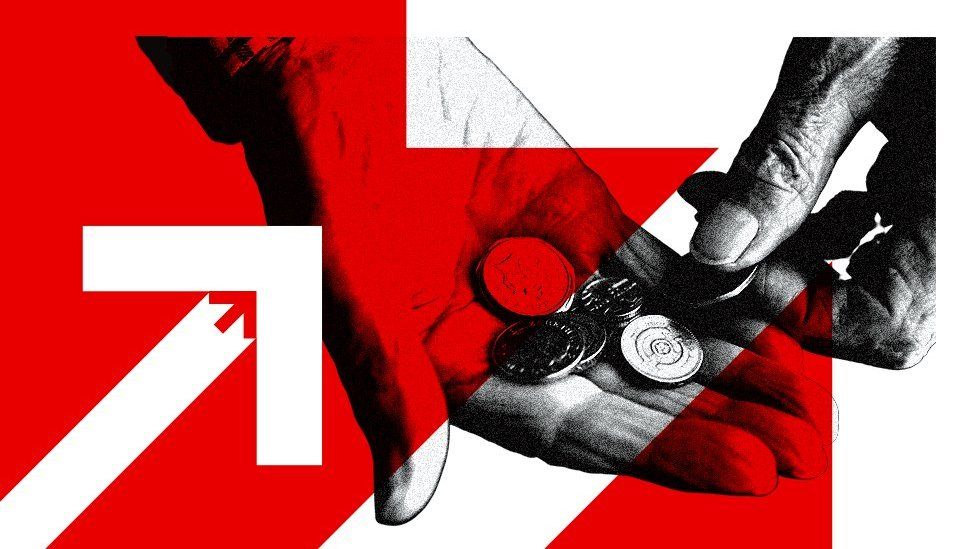
Prices in the UK rose by 2.3% in the year to April 2024 – the lowest rate since September 2021.
However, this is still above the Bank of England’s 2% inflation target, so it is not yet clear whether the Bank will decide to cut interest rates when it meets in June.
What does inflation mean?
Inflation is the increase in the price of something over time.
For example, if a bottle of milk costs £1 but is £1.05 a year later, then annual milk inflation is 5%.
How is the UK’s inflation rate measured?
The prices of hundreds of everyday items, including food and fuel, are tracked by the Office for National Statistics (ONS).
This virtual “basket of goods” is regularly updated to reflect shopping trends, with vinyl records and air fryers added in 2024, and hand sanitiser removed.
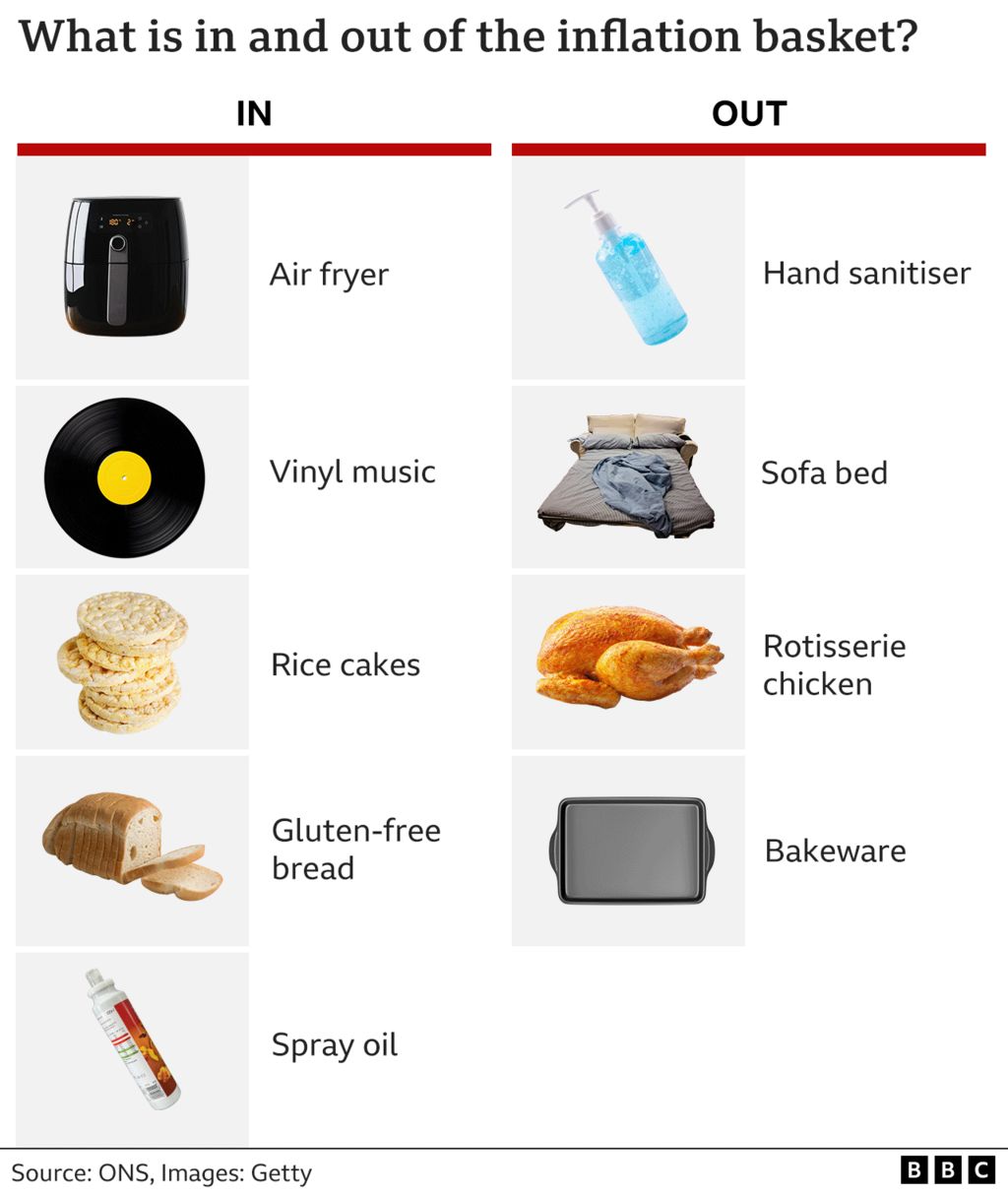
The ONS monitors price changes over the previous 12 months to calculate inflation.
The main inflation measure is called the Consumer Prices Index (CPI), external.
CPI fell in April largely because of falling gas and electricity prices as a result of a drop in the energy cap.
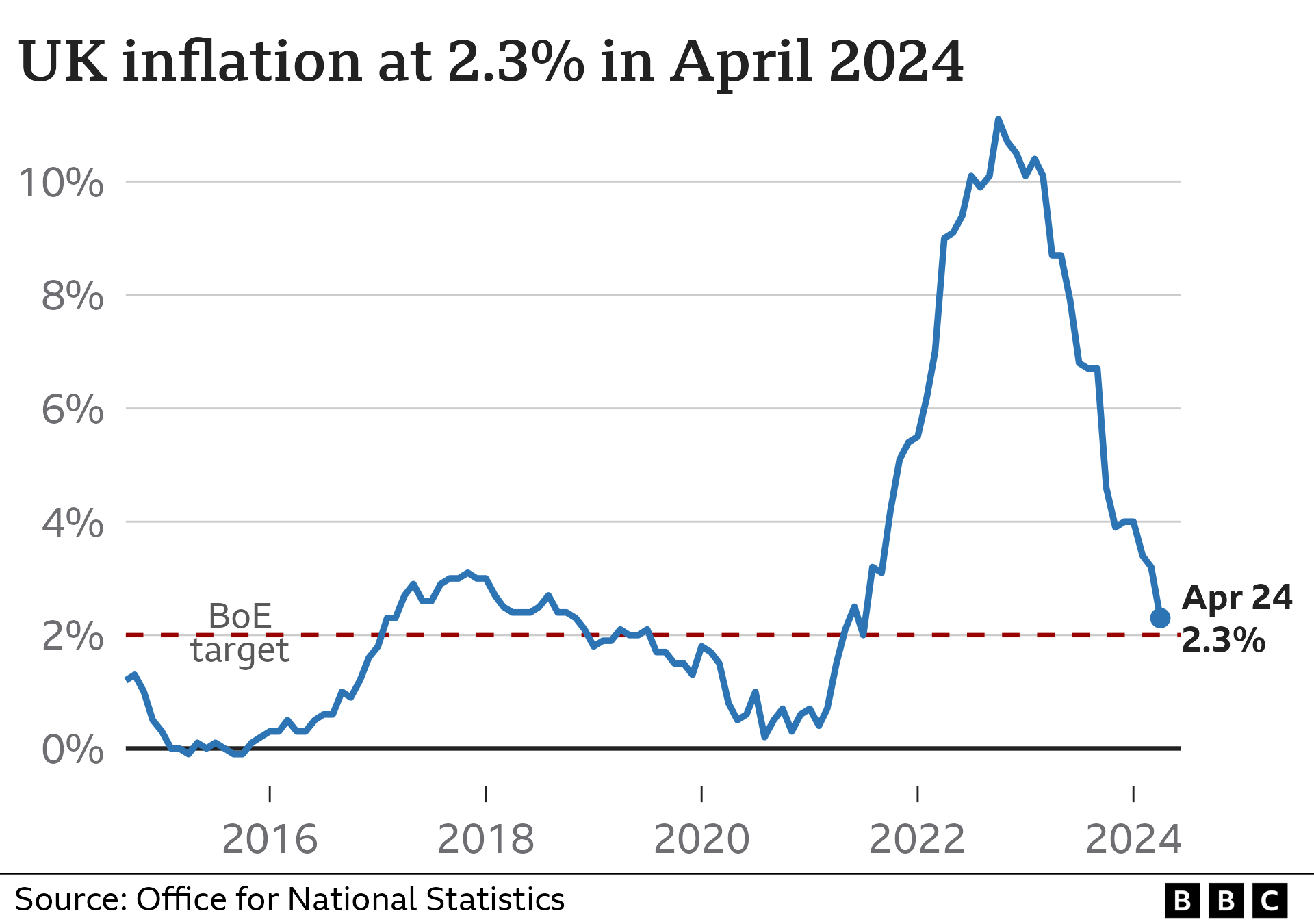
Why are prices still rising?
Inflation has fallen significantly since it hit 11.1% in October 2022, which was the highest rate for 40 years.
However, that doesn’t mean prices are falling – just that they are rising less quickly.
Inflation remained above the Bank of England’s 2% target partly because of high energy and food prices.
Worker shortages have also made it more expensive to find and keep staff, external.
Inflation soared in 2022 because oil and gas were in greater demand after the Covid pandemic. Energy prices surged again when Russia invaded Ukraine, cutting global supplies.
Why does putting up interest rates help to lower inflation?
The Bank of England uses interest rates to try and keep inflation at 2%.
When inflation was well above that target, it increased interest rates to 5.25%.
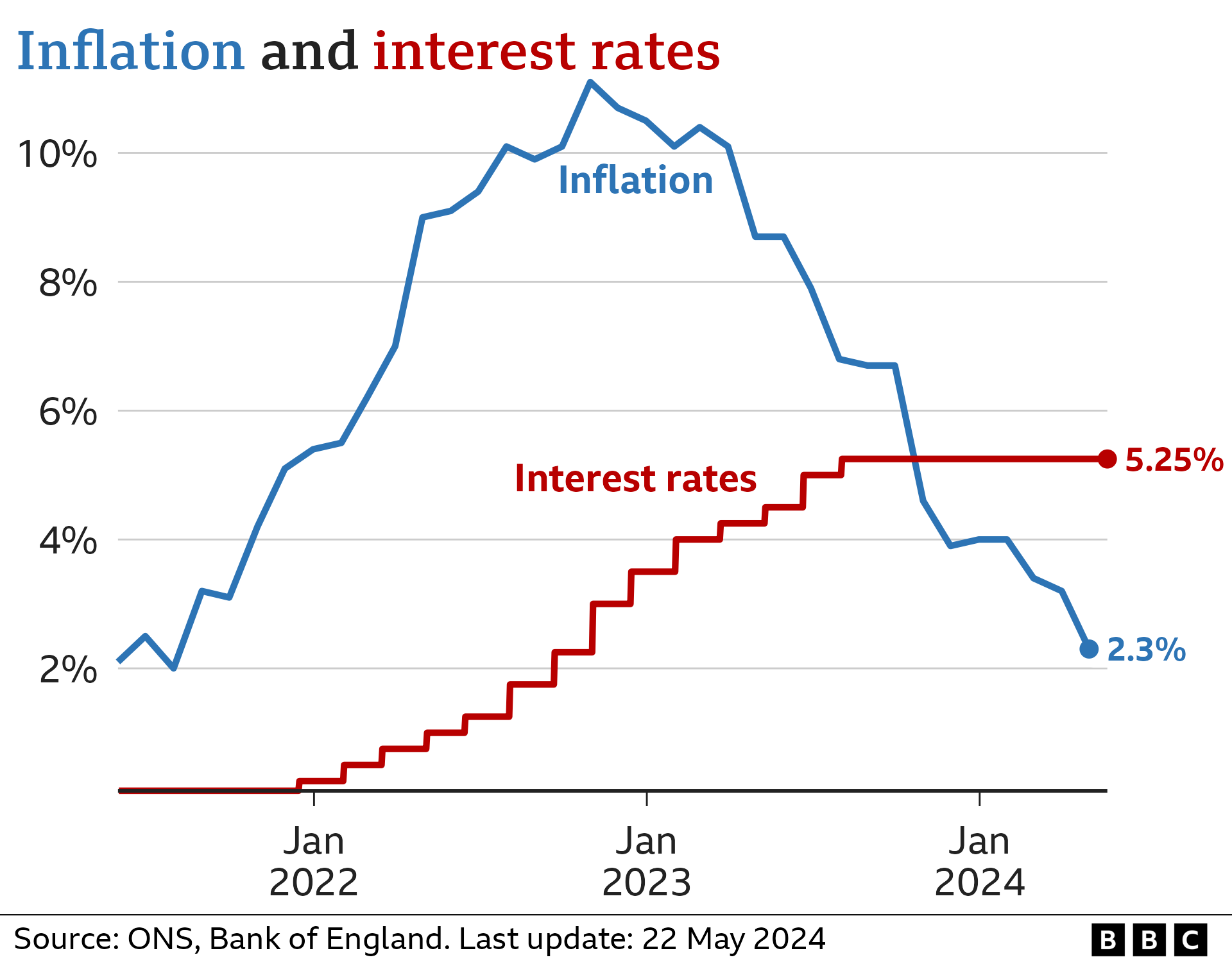
The idea is that if you make borrowing more expensive, people have less money to spend. People may also be encouraged to save more.
In turn, this reduces demand for goods and slows price rises.
But it is a balancing act – increasing borrowing costs risks harming the economy.
For example, homeowners face higher mortgage repayments, which can outweigh better savings deals.
Businesses also borrow less, making them less likely to create jobs. Some may cut staff and reduce investment.
When will inflation and interest rates go down?
In May, the Bank of England held rates at 5.25% for a sixth time.
Governor Andrew Bailey said the BoE needed to “see more evidence” that price rises had slowed but that he was “optimistic that things are moving in the right direction”.
He said the BoE expected inflation to fall “close” to its 2% target in the next couple of months.
The next inflation figures are released on 19 June and the next interest rate decision is 20 June.
Are wages keeping up with inflation?
Wages are rising faster than prices, official figures show.
Pay, excluding bonuses, grew by 6% in the first three months of 2024, compared with the same period a year before.
After taking inflation into account, it means pay went up by 1.9%.
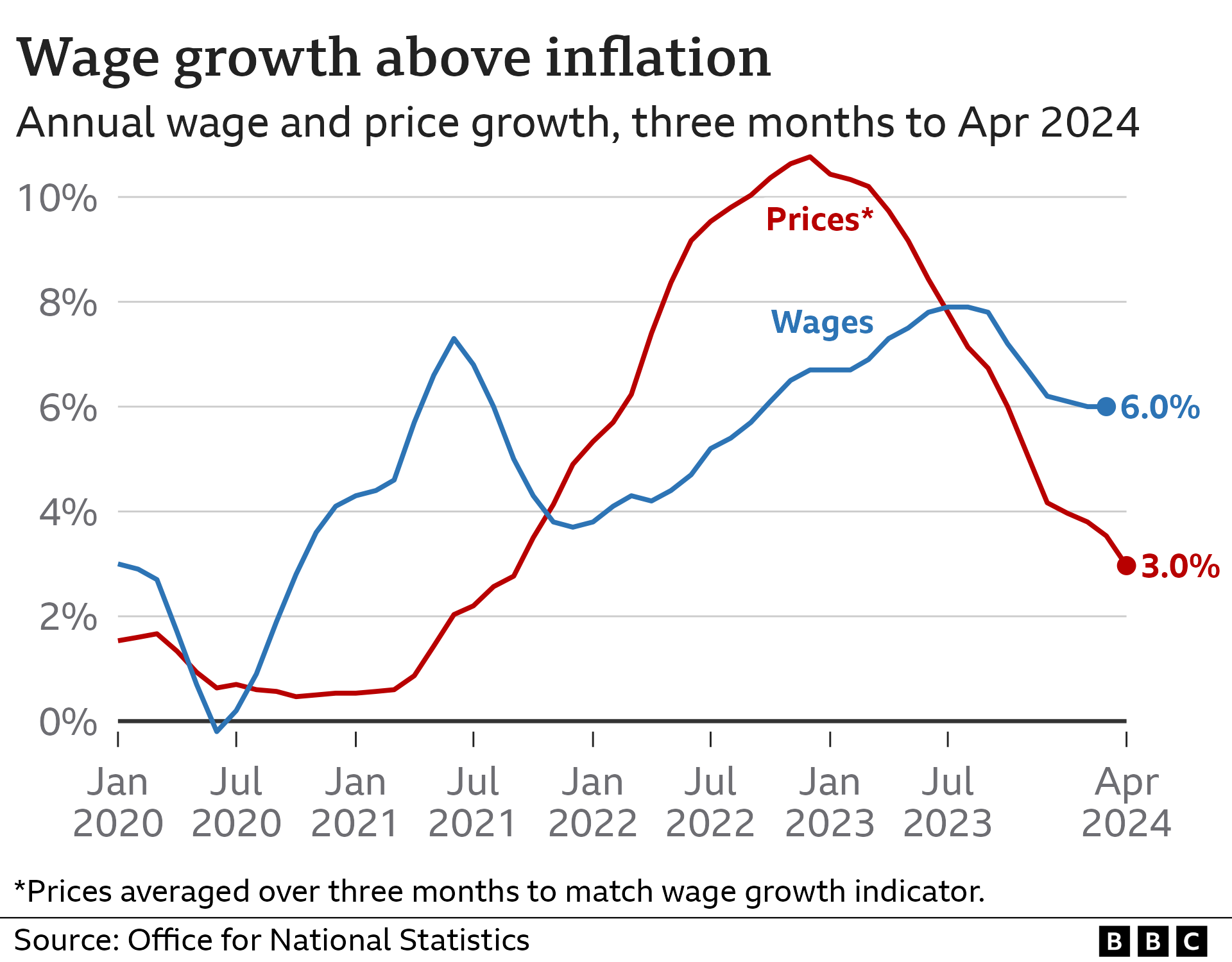
What is happening to inflation and interest rates in Europe and the US?
Many other countries have also seen inflation and higher interest rates.
At 2.3%, UK inflation has finally dropped below the rate for countries using the euro, which was 2.6% in May, up from 2.4% in April.
Despite the slight rise in inflation, in June the European Central Bank (ECB) cut its main interest rate from an all-time high of 4% to 3.75%, the first drop in five years.
In the US, inflation hit 3.4% in the 12 months to April, down from 3.5% in March.
The US central bank has kept its key interest rate at between 5.25% and 5.5% since July 2023. Analysts expect that rates will fall but not until the end of the 2024.
Source from BBC
Original News HERE
































